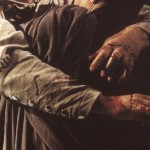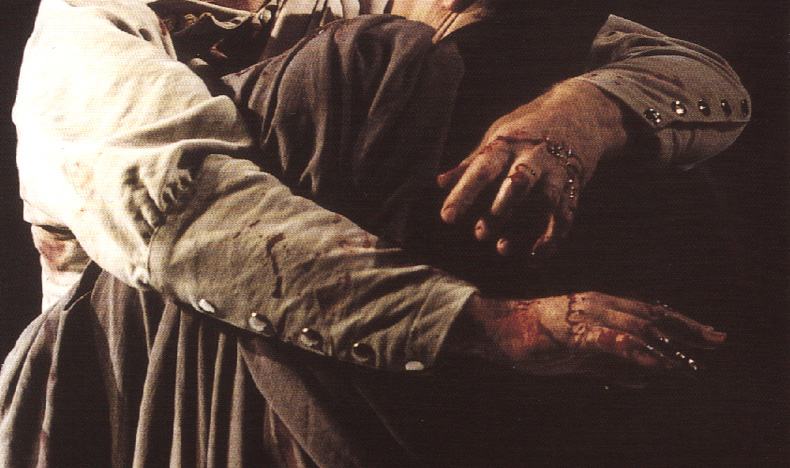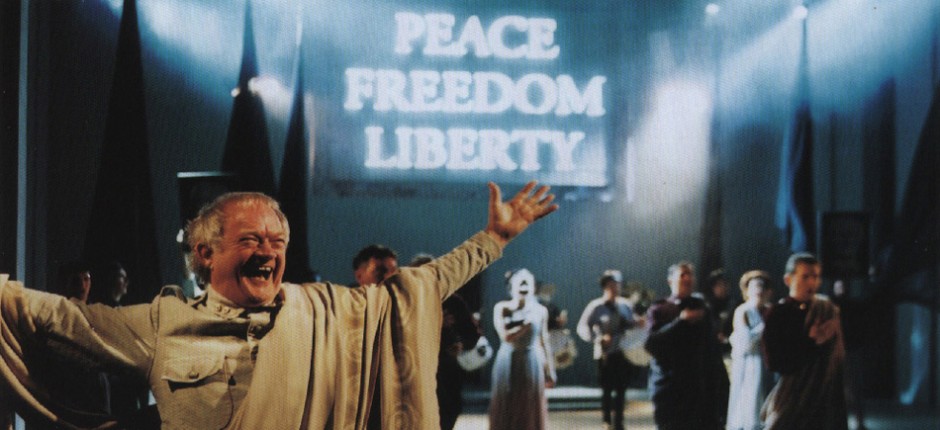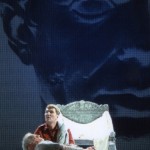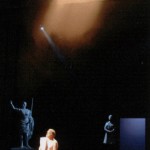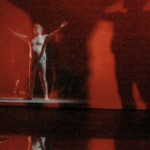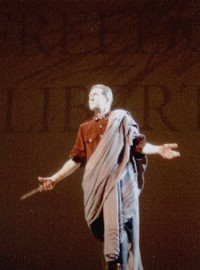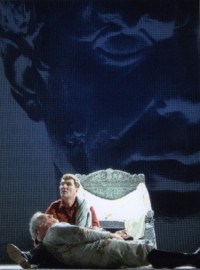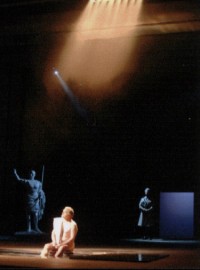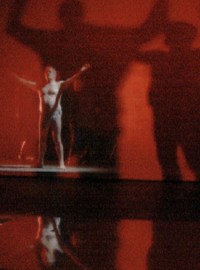Julius Caesar
Julius Caesar was designed on the Royal Shakespeare Theatre, Stratford ‘season stage’; a multi functional spatial framework designed by Alison Chitty for all three productions in the 2001 programme. The transformed RST space became an austere, epic canvas for the incoming creative teams and performers – it suited our ideas for Julius Caesar very well.
The world of the play was conceived as a Roman state of the late 20th Century, imagining that Mussolini’s fascist tyranny had prospered and had degenerated into a dogmatic throw-back to its roots two millennia beforehand – a clash of togas, tailored uniforms and neon propaganda.
The togas were cut to an authentic size and shape and draped on the body, using Roman sculptures as reference for the many different ways it could be styled and used. The toga really was a very practical garment in its time, but took some getting used to in rehearsal. The performers had to learn to control the folds and twists of the fabric as they moved; there was no stitching, pleating or any other form of controlled fabrication.
The elements of the set were created from printed vinyl scrim, silks and sculpted figures and furniture. The technical challenge was a deep pool of water downstage that emerged on a hydraulics and that was later solidified into the raised platform of the Forum for Mark Antony’s address to the mob.

